#Jesse Pollock
Text
I dont know who needs to be remineded that two beloved people on hockeyblr jesse pollock and zach hyman have pleged there support for the genocidal goverment of israel please do not support them.
#jesse pollock#zach hyman#edmonton oilers#bardown#hockeyblr#anti zionisim#pro palestine#i hate how people so easly praise zach hyman espicially that really broke my heart
4 notes
·
View notes
Text
you know who has rizz? jesse pollock and his 69 jersey

16 notes
·
View notes
Text
Rutger Mcgroarty is Jesse Pollock’s mini me
5 notes
·
View notes
Text
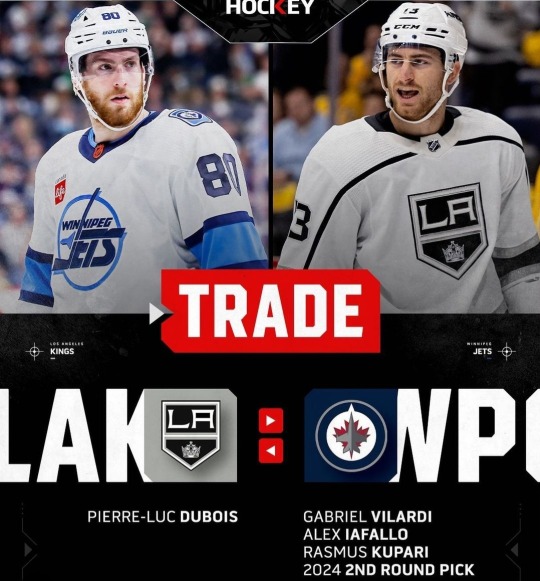
My thoughts are with Jesse Pollock 🫶
#poor guy is having the worst off-season#jesse pollock#bardown#pierre luc dubois#hockey#winnipeg jets#los angeles kings
2 notes
·
View notes
Text
ok but i wonder if the guys over at bardown on tsn ever make fun of each other and stuff when one of their teams wins against another one of the guy's teams...
like all i can think about is luca rubbing the avs winning tonight's game against the jets in jesse's face and that's very amusing to me lmao
and then jesse retaliates with how the jets shut out the avs earlier this season and luca then gives the reasonable retort of how injured they were and they just keep making jabs at each other about it
lord i love them all
#colorado avalanche#avs lb#tsn#bardown#luca celebre#jesse pollock#i also feel like luca would find a way to disprove jesse's opinion by bringing up the vanilla milk thing or how many quizzes he's won#like “who's opinion would you trust? the dude that calls milk 'vanilla milk' or the guy who's won (insert number here) quizzes?”
3 notes
·
View notes
Text


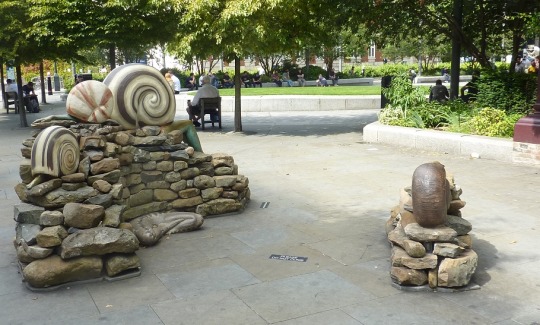
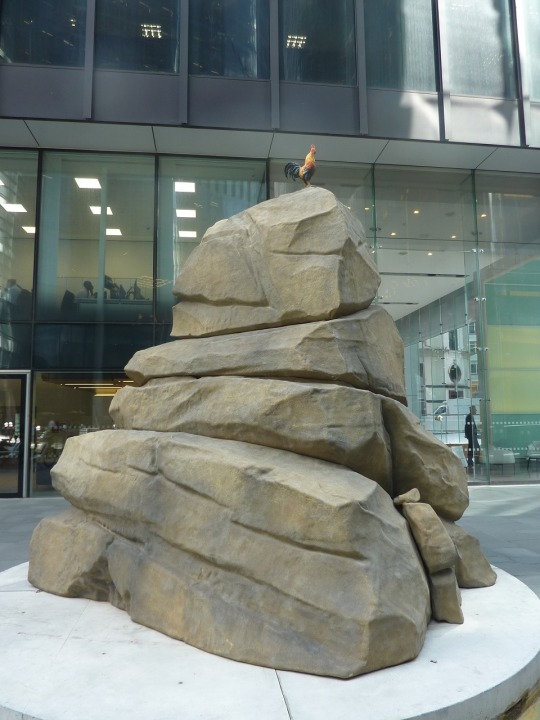

Sculpture In The City, London 2023
#Sculpture In The City 2023#Jocelyn McGregor#Earthing#Simeon Barclay#Pittu Pithu Pitoo#Jesse Pollock#The Granary
0 notes
Text
i know it’s hard to avoid tsn completely, but it would be a good idea if we all stopped watching and interacting with bardown and and their youtube stuff seeing as one of their employees is about 1 tweet away from outright saying he wants all palestinians dead
#riley.txt#so all the videos they do with the leafs. all the ‘calling out teammates’ videos#bc jesse pollock is a genocidal zionist
2 notes
·
View notes
Text

Well I found why we lost
0 notes
Text

Inb4 i get blocked by bardown
1 note
·
View note
Text
no matter what the outcome is, i just need to say, from the bottom of my heart, fuck jesse pollock
38 notes
·
View notes
Text
sorry for the emoji i had to censor jesse pollock but kris letang mitch marner appreciator.....wow
19 notes
·
View notes
Text
3-23-17: 15 year old Jack Hughes is interviewed by Sherry Bassin and Jesse Pollock, starting at 48 minutes
Transcript below cut (includes an earlier snippet with Mike Traikos)
JP: Mike, there's another young player in Toronto that you've had the opportunity to study, and he goes by the name of Jack Hughes. I was wondering if you could give some input on him as a player and what to expect from him in the future.
SB: Michael wrote an article on him.
MT: Yeah, it's funny. We're talking about young guys, and here's the next wave of the future. Jack Hughes is still two..? years away from getting drafted in the NHL. I think he's 20, I want to say, I think he's 2019 or 2020 draft eligible. So we're talking about real young. But it's funny, when I was coming up with who might be the next Team North America four years later, I had Jack Hughes on the list, and that's how special of a talent this kid is. He's small. He's basically a Johnny Gaudreau or Mitch Marner. But, man, oh, man, he has skill. Skates very much like Connor does, really nifty kind of like Mitch and Johnny in terms of doesn't get hit a whole lot and just puts up just gobs and gobs of points so, he's a name that I think a lot of people are going to be familiar with and you know what, I think what we're seeing now with Connor I remember talking with Jack about this, was his style of play is really kind of catching on at the younger levels like, you watch Connor and nothing is in half speed it seems like he's got the puck and he's just trying to go go go and it's very rare that you see a player who's able to stick handle and carry the puck with the kind of speed and the amount of pace that Connor plays with. And yet all the young guys are now playing that way. So it's having a real trickle-down effect. And I think if you think the league is fast now, just wait until these young guys come into the league, like we mentioned Jack Hughes. And there's so many others that are kind of watching Connor McDavid play, and they're saying, okay, basically that's the kind of style I want to play. I want to have the puck, and I want to play with pace, and I want to just keep pushing it, pushing it, pushing it. And I kind of shudder to think what the league is going to look like in five years when all these speed-throughs are in the game, and they're just whipping around the ice a million miles an hour.
SB: Oh, like if you can't skate in a few years from now, you're going to get windburn. You're going to need Nuxema to put on your neck because they go by you. But the real thing about Jack Hughes is, just like we said about Matthews being a special person, like a top character guy, just like we said about Sheifele and McDavid, like, exudes character. It comes out his fingernails. This guy's a high-character kid. I know the environment. I knew his mother before his father met her and stuff and know what they're all about. But I've often said all the time, you know what I mean? When you put character and ability together, you get a superstar like Matthews and McDavid and these guys.
JP: Sid.
SB: And that's in the- Sid.
MT: And just for a little background for anyone who doesn't know, Jack Hughes, obviously his father, was a longtime player development coach at the Leafs. And say what you will about how he developed players, but this guy definitely knows the approach to take with his sons and his eldest son, Quinn, is in the National Development Program. I believe he's committed to Michigan University.
SB: Yeah, and he's a heck of a player, like a phenomenal player.
MT: Should be a top 10 pick, no question, in 2018. So, yeah, get used to seeing there, hearing about the Hughes kids.
SB: And the younger brother. The younger brother, Luke, is, oh, yeah. These guys, he can go around you, the younger brother, Luke, but he'll go over top you, too. And first of all, their mother was a phenomenal athlete, okay, and high-character people. And so the brother that's with the national development program, he's the best defenseman on that team by far and I think, I think he's he's a candidate to be the best player on that team so you know these guys have come up in an environment like you said I tried to hire his dad as a coach one time and uh, because he is a very good teacher and stuff like that so as you pointed out that uh it's going to be coming in the future. This isn't the end of the great players.
MT: There's an interesting thing about the brother too, Sherry, I'm sorry to cut you off, but Quinn is not a tall fellow by any stretch of the imagination. He might be the Johnny Gaudreau of defensemen where we see Quinn kind of break through in the NHL as a small, skilled defenseman. And I don't think we've really seen that yet. We've seen maybe a couple players here and there, like maybe Ryan Ellis, guys of that nature, but not to the skill level that Quinn Hughes has. So it will be interesting to see where he gets chosen in the NHL and what his path looks like because he could actually end up becoming maybe the first really high-end skilled, really small defenseman. And if he's able to have success in the NHL, I think that opens a lot of doors for a lot of smaller skilled players that maybe are afraid to play defense because it's always thought of as you have to have a bit of size to play the position.
SB: Well, when I see Ellis playing, who I have a lot of respect for, I remember when he played for the Windsor Spitfires, Quinn Hughes is highly, highly skilled, very unselfish, great vision, just like we're talking about Jack. Okay. So, I mean, it's in the family. It's in the DNA and good upbringing. So we shouldn't be worried about these 10 young guns you're talking about because pretty soon you'll be writing about the next 10 young guns.
————
JP: …Hearing him talk about the Hughes kids just excited me. I don't know about you but it just really made me think, how do you develop talent like this? How do you have three kids who could go on to become potential top 10 NHL draft picks? It's incredible. And our next guest, Sherry, Jack Hughes, is going to be able to tell us a bit about that.
SB: Great young kid too. Great young kid.
JP: Alright, we are now pleased to welcome Jack Hughes to the show. Jack, thanks for coming in.
SB: Jack.
JH: Hey, Sherry.
SB: How are you doing, Jack? First of all, I wanted to tell you that we're really excited. Thank you for coming on here. I love interviewing highly talented young people that have high character, and I've known you since you were knee high to a grasshopper.
JH: Haha.
SB: So I'm excited because I really believe in my heart, I'm not trying to be patronizing. You're the best player available in this whole province or whatever available for the OHL draft. I don't want to demean whoever got player of the year. He must be a heck of a player because I know how good you are, and I know what kind of person you are. So I want to thank you for coming on.
JH: Yeah, thanks for having me.
SB: No, no kidding here. So now listen, I'm going to tell something and then I've got to hear from you. Because good players and scoring. Stevie Sullivan came to, played 18 years in the NHL. I've got to tell you this quick story. And he was a free agent, and he wasn't very big. He could skate like you can skate, and he played 18 years. And we had four scrimmages in training camp, and he got 19 points in our training camp at Sault Ste. Marie. So right away, I said to my assistant manager, get him up there and we give him a full scholarship for education and stuff like that. And he was sitting between his parents and I said to him, how many points do you have in these scrimmages? He says, I don't know. I said, you're a liar. Called him a liar right to his face. And he looked at me and the parents had never met me He said I've never known a guy that got a lot of points That didn't know how many points I said how many points you got. He said around 18. I said you're damn right you got 19. Now how many points you got this year?
JH: I think I had around 170.
SB: 170. In how many games?
JH: 75, 80…
SB: 75, 80. How's your math, Minion? How is your math here?
JP: My math isn't good, but I know that that's pretty impressive.
SB: That's more than impressive. Now tell me something. First of all, I know your family really well. I know the upbringing. I know what it's all about. And, you know, I think your brother, Quinn, who I know very well too, and I think he's the best, for sure, the best defenseman on the U.S. team, if not the best player. I know your brother, Luke, who I think is going to be one of the best. He might even be better than you two guys when it comes to it. Now tell me about all this. When you're as talented as you are, the high character that you have, the environment that you were brought up in, tell me about this when everybody's saying you're going to be the first pick and you're the best player. How do you deal with it day to day and people talking to you?
JH: I mean, really, I'm just trying to enjoy it. I mean, it only happens once, right? I only go through the OHL draft once. I'm just trying to enjoy it with my friends, my family. Just taking it lightly, I’m never- I’m not the cock- I'm not being cocky or anything, like shooting my mouth off. Really just like, just trying to have fun with it I guess. And not taking any pressure.
SB: Well good for you. First of all you're never going to be cocky with it. You're humble, and you've stayed at my house and everything, and I know what you are. And I think one of the biggest reasons you're a star and going to be a superstar is because of your character and because of your upbringing. So I'm not surprised, but you've got to be thinking about it, and good that you're having fun because that's what life's about. I used to tell my players all the time, winning is fun. Let's go have some fun.
JP: Jack, your dad, Jim, was the director of player development for the Toronto Maple Leafs. And I just want to hear from you what role that helped in developing you and your brothers as hockey players and the type of training and the programs that he puts you in as kids because it's quite incredible to see. We mentioned earlier on the show that three brothers could all potentially be top 10 NHL picks one day. It's incredible to think about, and it's no coincidence.
JH: Yeah, for sure. I mean, like, the mental things he would tell us tell us like, the things he would be telling the 19, 20 year old Maple Leafs prospects he'd be telling the same things to us when we were 10, 11, 12, 13, like just he made us think like a pro I guess and just the way we train we did so methodically like everything we did, hard work. He and my mother taught me so much. Everything I know is from them. The things they did with us, shooting in the basement, taking us to outdoor hockey. They've done so much for us, both mentally and physically. They've made us better people and better players.
SB: Well, first of all, your mother was a heck of an athlete. Let's not forget that. And I knew your grandparents very well, and your grandmother is still alive, and your grandfather died prematurely from cancer, which just makes me, it hurts just when I talk about it. But I can tell you this, that that kind of an an environment- I tried to hire your dad as a coach one time
JH: Haha
SB: He told me to suck eggs there and so forth and so forth but anyway he did, so I know the family and stuff and tell us about this, when you're so committed like you are, because I always believe motivation is how bad you believe in something times how bad you want to attain it. I know how bad you believe in it. I know how you live it. I know how bad you want to attain it. So what is your typical week during hockey season? How often are you on the ice?
JH: Yeah, for sure. I mean, I think we practice with practice with the Marlies, we practice three times a week, um some weeks we played once a week some weeks we played four times a week and then like as much as I can I try to get in the gym try to get stronger maybe once or twice a week and maybe do a little bit of extra skills with like groups called like, prep um pro edge power [he means Power Edge Pro] like I think that's McDavid's group. I mean we practice four times a week then spend two games so we're probably on the ice six out of seven days a week and then O mean just the fun aspects of it like when it comes to winter time, I mean me and my friends are always going to the outdoor rink and just playing four hours of shinny whenever we can. I mean, we just, I think we just live it. I mean, I love it. It's not work to me. It's all fun, right? So, I mean, I can never get enough of it.
SB: Yeah, I mean, the thing about it is you love it by conduct, going to outdoor rinks. I mean, I grew up on outdoor rinks, and I'm a little bit – I'm a couple years older than you. But the thing is this, is that that's just an example, and you couldn't get enough of it. Like you say, you'd be there four hours, and if the ice was still there, you'd have stayed longer.
JH: Mhm.
SB; That's your feeling for it, and that's why you're this good, and I'm excited to be able to tell people about it.
JP: Jack you mentioned earlier that your parents really helped you develop into a good hockey player but also a good person and that's something that Sherry emphasizes just as much as anything really the importance of that and uh I think that's really great that you mentioned that. I want to ask you something in regards to the OHL. I know that you applied for exceptional status and ultimately it was denied. So I was wondering if you can talk about that experience and how maybe that will help you going forward or if it sparked anything in you.
JH: Yeah, for sure. I mean, that was such a great experience going through that process like all the interviews meeting people I did. I mean, it just made me mature so much faster I think, and I mean it was just great for me to grow up that fast I think, I know like, it wasn't really publicized or anything like that, but behind the scenes it was really good for me. Um, I think it was a blessing that I didn't get it because I mean it helped me like, it allowed myself to stay at home another year and have one more year of minor midget where I could really excel. So I think, I think that process was really good for me, like meeting the people I did, and just hearing things about the league. And I learned a lot of new things about myself as well, I think.
SB: Well, Jack, there's no question. I mean, you've seen it. I've known it for years. I mean, what people, when they watch you, never mind your just ability, never mind his skill, Minion. He's a phenomenal team player, phenomenal team player, got great vision. If if you're open you're going to get the puck and and it's sometimes it's frustrating because when you're that- got that much ability that he does, he never shows any negativity on the ice you know, which I really respect in this guy and sometimes when you're that skilled and you give the puck and you're not getting it back, you know what I mean? He never showed any negative emotion. And so this guy's destined for big things, like big, big things. And listen, I can't thank you enough. I mean, you just, you know, just by listening to you, we know the character. We know the environment you're a product of. You know that I love your parents and love your family. But besides that, it's because of the people you are, never mind the fact that you happen to be a good hockey player. So all I know is that big things are destined for you, and I really want to thank you a lot for coming on.
JH: Yeah, thank you, Sherry.
SB: Good to talk to you. Keep punching.
JP: Thanks, Jack. Good luck.
JH: Thank you, yeah.
JP: What a mature, young individual, Sherry.
SB: It's hard to believe that he's only 15 going on 16, isn't it? I have said over and over with you and all the time we've got to visit since you were a little guy, okay, all the time, that the average 16 year old to 19 year old that plays in the OHL or plays in the- is a way more mature than the average 16 year old that you run to in the street because of all the decisions all the things that he had to do I mean think about what he talked about his commitment: four hours on an outdoor rink playing with his buddies. And it wasn't work. It was fun. Going to the gym regularly. Think about being the right kind of person in the environment that he's a product of. His mom and dad, I mean, who I know very, very well. You know, with the direction. And it's frustrating when you're that talented, when you're playing with players that they know they're trying their best, but when you're above their ability, so to speak, and that's not meant with disrespect to the players because they're not all born equal as hockey players, don't all have the same commitment, and you're playing with them and you don't get the puck back or you do certain things and not let it bother you because inside it's got to bother you because you think if I just got this i'm watching a game one time where he goes in tick-tack-toe how's your mama on the defenseman goes right by the guy makes a phenomenal shot scores a goal called back as a guy three zones away got a penalty and so all those 170 some points he talked about weren't one of the points and so, but he never showed that frustration, never showed frustration. Because he didn't get player of the year, whatever it is. And I'm sure this kid is a heck of a player. I'm not trying to demean anyone. But inside, when you got that competitive spirit, and especially- the guy that got it, he's a super superstar then. Because this guy's a superstar. And it was even hard for me to accept because I knew him so well but I don't want to demean the other guy I didn't see him enough and-
JP: And it's a humbling experience, one day he's going to look back at it and maybe he'll say this was the best thing that happened to me as a teenager.
SB: Yeah what you just said when you asked that question about exceptional player.
#the exceptional status denial is soooo interesting to me because like. everything could have turned out so differently#jack hughes#transcript#2017
42 notes
·
View notes
Text
(Mostly) Lost, but Not Forgotten: Omar Khayyam (1923) / A Lover’s Oath (1925)

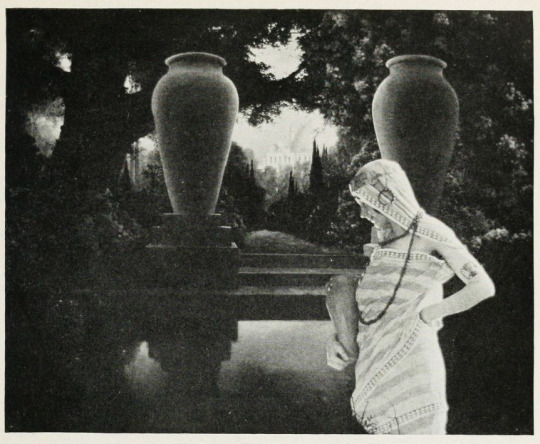
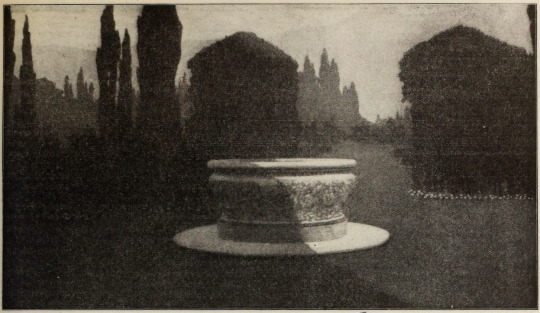
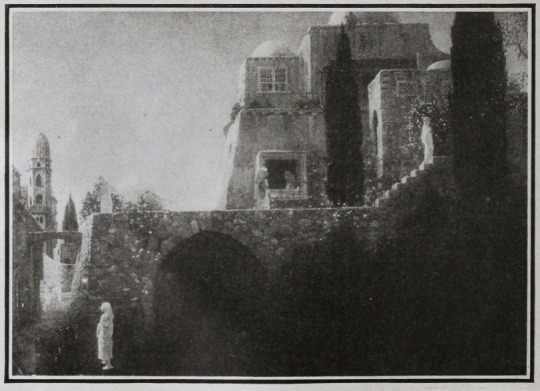
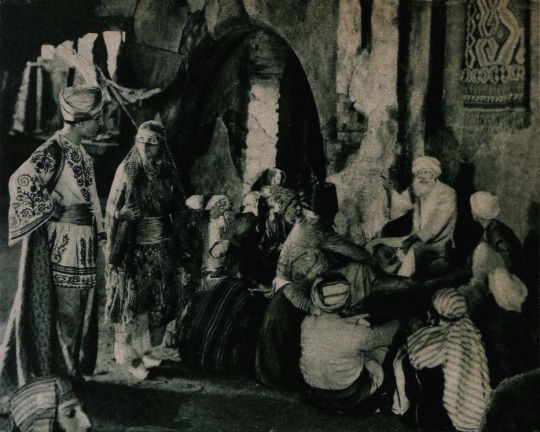
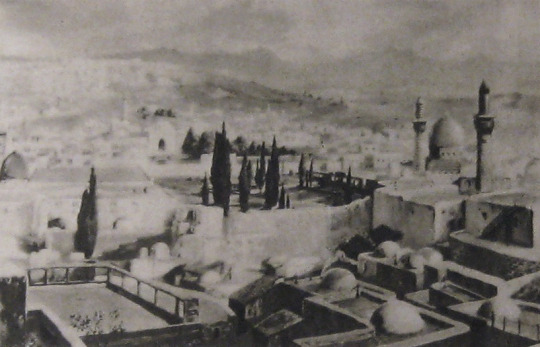

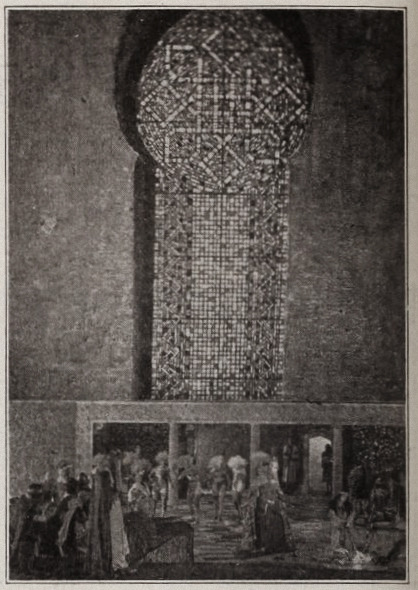
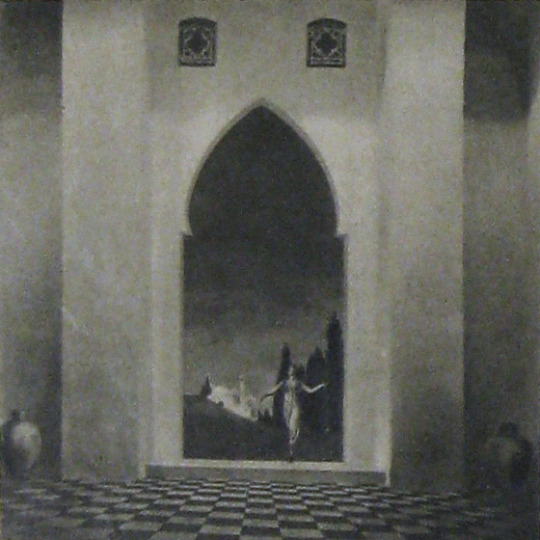


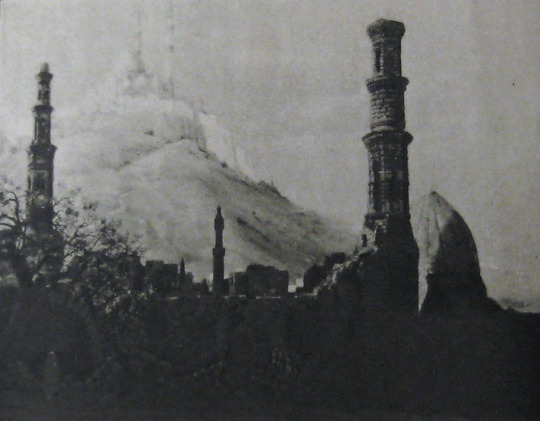
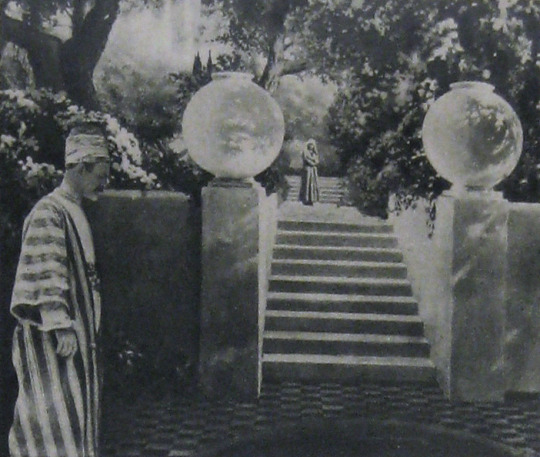
Alternate Titles: The Rubaiyat of Omar Khayyam, The Rubaiyat, Omar Khayyam, Omar
Direction: Ferdinand Pinney Earle; assisted by Walter Mayo
Scenario: Ferdinand P. Earle
Titles: Marion Ainslee, Ferdinand P. Earle (Omar), Louis Weadock (A Lover’s Oath)
Inspired by: The Rubaiyat of Omar Khayyam, as edited & translated by Edward FitzGerald
Production Manager: Winthrop Kelly
Camera: Georges Benoit
Still Photography: Edward S. Curtis
Special Photographic Effects: Ferdinand P. Earle, Gordon Bishop Pollock
Composer: Charles Wakefield Cadman
Editors: Arthur D. Ripley (The Rubaiyat of Omar Khayyam version), Ethel Davey & Ferdinand P. Earle (Omar / Omar Khayyam, the Director’s cut of 1922), Milton Sills (A Lover’s Oath)
Scenic Artists: Frank E. Berier, Xavier Muchado, Anthony Vecchio, Paul Detlefsen, Flora Smith, Jean Little Cyr, Robert Sterner, Ralph Willis
Character Designer: Louis Hels
Choreography: Ramon Novarro (credited as Ramon Samaniegos)
Technical Advisors: Prince Raphael Emmanuel, Reverend Allan Moore, Captain Dudley S. Corlette, & Captain Montlock or Mortlock
Studio: Ferdinand P. Earle Productions / The Rubaiyat, Inc. (Production) & Eastern Film Corporation (Distribution, Omar), Astor Distribution Corporation [States Rights market] (Distribution, A Lover’s Oath)
Performers: Frederick Warde, Edwin Stevens, Hedwiga Reicher, Mariska Aldrich, Paul Weigel, Robert Anderson, Arthur Carewe, Jesse Weldon, Snitz Edwards, Warren Rogers, Ramon Novarro (originally credited as Ramon Samaniegos), Big Jim Marcus, Kathleen Key, Charles A. Post, Phillippe de Lacy, Ferdinand Pinney Earle
Premiere(s): Omar cut: April 1922 The Ambassador Theatre, New York, NY (Preview Screening), 12 October 1923, Loew’s New York, New York, NY (Preview Screening), 2 February 1923, Hoyt’s Theatre, Sydney, Australia (Initial Release)
Status: Presumed lost, save for one 30 second fragment preserved by the Academy Film Archive, and a 2.5 minute fragment preserved by a private collector (Old Films & Stuff)
Length: Omar Khayyam: 8 reels , 76 minutes; A Lover’s Oath: 6 reels, 5,845 feet (though once listed with a runtime of 76 minutes, which doesn’t line up with the stated length of this cut)
Synopsis (synthesized from magazine summaries of the plot):
Omar Khayyam:
Set in 12th century Persia, the story begins with a preface in the youth of Omar Khayyam (Warde). Omar and his friends, Nizam (Weigel) and Hassan (Stevens), make a pact that whichever one of them becomes a success in life first will help out the others. In adulthood, Nizam has become a potentate and has given Omar a position so that he may continue his studies in mathematics and astronomy. Hassan, however, has grown into quite the villain. When he is expelled from the kingdom, he plots to kidnap Shireen (Key), the sheik’s daughter. Shireen is in love with Ali (Novarro). In the end it’s Hassan’s wife (Reicher) who slays the villain then kills herself.
A Lover’s Oath:
The daughter of a sheik, Shireen (Key), is in love with Ali (Novarro), the son of the ruler of a neighboring kingdom. Hassan covets Shireen and plots to kidnap her. Hassan is foiled by his wife. [The Sills’ edit places Ali and Shireen as protagonists, but there was little to no re-shooting done (absolutely none with Key or Novarro). So, most critics note how odd it is that all Ali does in the film is pitch woo, and does not save Shireen himself. This obviously wouldn’t have been an issue in the earlier cut, where Ali is a supporting character, often not even named in summaries and news items. Additional note: Post’s credit changes from “Vizier” to “Commander of the Faithful”]
Additional sequence(s) featured in the film (but I’m not sure where they fit in the continuity):
Celestial sequences featuring stars and planets moving through the cosmos
Angels spinning in a cyclone up to the heavens
A Potters’ shop sequence (relevant to a specific section of the poems)
Harem dance sequence choreographed by Novarro
Locations: palace gardens, street and marketplace scenes, ancient ruins


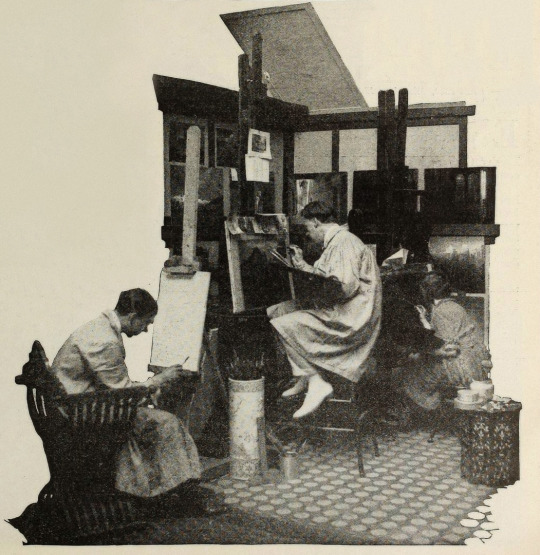


Points of Interest:
“The screen has been described as the last word in realism, but why confine it there? It can also be the last word in imaginative expression.”
Ferdinand P. Earle as quoted in Exhibitors Trade Review, 4 March 1922
The Rubaiyat of Omar Khayyam was a massive best seller. Ferdinand Pinney Earle was a classically trained artist who studied under William-Adolphe Bougueraeu and James McNeill Whistler in his youth. He also had years of experience creating art backgrounds, matte paintings, and art titles for films. Charles Wakefield Cadman was an accomplished composer of songs, operas, and operettas. Georges Benoit and Gordon Pollock were experienced photographic technicians. Edward S. Curtis was a widely renowned still photographer. Ramon Novarro was a name nobody knew yet—but they would soon enough.
When Earle chose The Rubaiyat as the source material for his directorial debut and collected such skilled collaborators, it seemed likely that the resulting film would be a landmark in the art of American cinema. Quite a few people who saw Earle’s Rubaiyat truly thought it would be:
William E. Wing writing for Camera, 9 September 1922, wrote:
“Mr. Earle…came from the world of brush and canvass, to spread his art upon the greater screen. He created a new Rubaiyat with such spiritual colors, that they swayed.”
…
“It has been my fortune to see some of the most wonderful sets that this Old Earth possesses, but I may truly say that none seized me more suddenly, or broke with greater, sudden inspiration upon the view and the brain, than some of Ferdinand Earle’s backgrounds, in his Rubaiyat.
“His vision and inspired art seem to promise something bigger and better for the future screen.”
As quoted in an ad in Film Year Book, 1923:
“Ferdinand Earle has set a new standard of production to live up to.”
Rex Ingram
“Fifty years ahead of the time.”
Marshall Neilan
The film was also listed among Fritz Lang’s Siegfried, Chaplin’s Gold Rush, Fairbanks’ Don Q, Lon Chaney’s Phantom of the Opera and The Unholy Three, and Erich Von Stroheim’s Merry Widow by the National Board of Review as an exceptional film of 1925.
So why don’t we all know about this film? (Spoiler: it’s not just because it’s lost!)
The short answer is that multiple dubious legal challenges arose that prevented Omar’s general release in the US. The long answer follows BELOW THE JUMP!
Earle began the project in earnest in 1919. Committing The Rubaiyat to film was an ambitious undertaking for a first-time director and Earle was striking out at a time when the American film industry was developing an inferiority complex about the level of artistry in their creative output. Earle was one of a number of artists in the film colony who were going independent of the emergent studio system for greater protections of their creative freedoms.
In their adaptation of The Rubaiyat of Omar Khayyam, Earle and Co. hoped to develop new and perfect existing techniques for incorporating live-action performers with paintings and expand the idea of what could be accomplished with photographic effects in filmmaking. The Rubaiyat was an inspired choice. It’s not a narrative, but a collection of poetry. This gave Earle the opportunity to intersperse fantastical, poetic sequences throughout a story set in the lifetime of Omar Khayyam, the credited writer of the poems. In addition to the fantastic, Earle’s team would recreate 12th century Persia for the screen.
Earle was convinced that if his methods were perfected, it wouldn’t matter when or where a scene was set, it would not just be possible but practical to put on film. For The Rubaiyat, the majority of shooting was done against black velvet and various matte photography and multiple exposure techniques were employed to bring a setting 800+ years in the past and 1000s of miles removed to life before a camera in a cottage in Los Angeles.
Note: If you’d like to learn a bit more about how these effects were executed at the time, see the first installment of How’d They Do That.
Unfortunately, the few surviving minutes don’t feature much of this special photography, but what does survive looks exquisite:

see all gifs here
Earle, knowing that traditional stills could not be taken while filming, brought in Edward S. Curtis. Curtis developed techniques in still photography to replicate the look of the photographic effects used for the film. So, even though the film hasn’t survived, we have some pretty great looking representations of some of the 1000s of missing feet of the film.
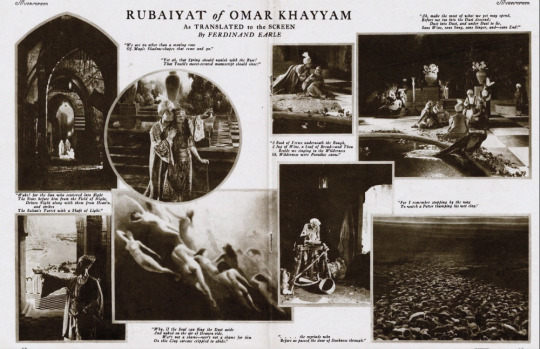
Nearly a year before Curtis joined the crew, Earle began collaboration with composer Charles Wakefield Cadman. In another bold creative move, Cadman and Earle worked closely before principal photography began so that the score could inform the construction and rhythm of the film and vice versa.
By the end of 1921 the film was complete. After roughly 9 months and the creation of over 500 paintings, The Rubaiyat was almost ready to meet its public. However, the investors in The Rubaiyat, Inc., the corporation formed by Earle to produce the film, objected to the ample reference to wine drinking (a comical objection if you’ve read the poems) and wanted the roles of the young lovers (played by as yet unknown Ramon Novarro and Kathleen Key) to be expanded. The dispute with Earle became so heated that the financiers absconded with the bulk of the film to New York. Earle filed suit against them in December to prevent them from screening their butchered and incomplete cut. Cadman supported Earle by withholding the use of his score for the film.
Later, Eastern Film Corp. brokered a settlement between the two parties, where Earle would get final cut of the film and Eastern would handle its release. Earle and Eastern agreed to change the title from The Rubaiyat of Omar Khayyam to simply Omar. Omar had its first official preview in New York City. It was tentatively announced that the film would have a wide release in the autumn.
However, before that autumn, director Norman Dawn launched a dubious patent-infringement suit against Earle and others. Dawn claimed that he owned the sole right to use multiple exposures, glass painting for single exposure, and other techniques that involved combining live action with paintings. All the cited techniques had been widespread in the film industry for a decade already and eventually and expectedly Dawn lost the suit. Despite Earle’s victory, the suit effectively put the kibosh on Omar’s release in the US.
Earle moved on to other projects that didn’t come to fruition, like a Theda Bara film and a frankly amazing sounding collaboration with Cadman to craft a silent-film opera of Faust. Omar did finally get a release, albeit only in Australia. Australian news outlets praised the film as highly as those few lucky attendees of the American preview screenings did. The narrative was described as not especially original, but that it was good enough in view of the film’s artistry and its imaginative “visual phenomena” and the precision of its technical achievement.
One reviewer for The Register, Adelaide, SA, wrote:
“It seems almost an impossibility to make a connected story out of the short verse of the Persian of old, yet the producer of this classic of the screen… has succeeded in providing an entertainment that would scarcely have been considered possible. From first to last the story grips with its very dramatic intensity.”
While Omar’s American release was still in limbo, “Ramon Samaniegos” made a huge impression in Rex Ingram’s Prisoner of Zenda (1922, extant) and Scaramouche (1923, extant) and took on a new name: Ramon Novarro. Excitement was mounting for Novarro’s next big role as the lead in the epic Ben-Hur (1925, extant) and the Omar project was re-vivified.

A new company, Astor Distribution Corp., was formed and purchased the distribution rights to Omar. Astor hired actor (note, not an editor) Milton Sills to re-cut the film to make Novarro and Key more prominent. The company also re-wrote the intertitles, reduced the films runtime by more than ten minutes, and renamed the film A Lover’s Oath. Earle had moved on by this point, vowing to never direct again. In fact, Earle was indirectly working with Novarro and Key again at the time, as an art director on Ben-Hur!
Despite Omar’s seemingly auspicious start in 1920, it was only released in the US on the states rights market as a cash-in on the success of one of its actors in a re-cut form five years later.
That said, A Lover’s Oath still received some good reviews from those who did manage to see it. Most of the negative criticism went to the story, intertitles, and Sills’ editing.
What kind of legacy could/should Omar have had? I’m obviously limited in my speculation by the fact that the film is lost, but there are a few key facts about the film’s production, release, and timing to consider.
The production budget was stated to be $174,735. That is equivalent to $3,246,994.83 in 2024 dollars. That is a lot of money, but since the production was years long and Omar was a period film set in a remote locale and features fantastical special effects sequences, it’s a modest budget. For contemporary perspective, Robin Hood (1922, extant) cost just under a million dollars to produce and Thief of Bagdad (1924, extant) cost over a million. For a film similarly steeped in spectacle to have nearly 1/10th of the budget is really very noteworthy. And, perhaps if the film had ever had a proper release in the US—in Earle’s intended form (that is to say, not the Sills cut)—Omar may have made as big of a splash as other epics.
It’s worth noting here however that there are a number of instances in contemporary trade and fan magazines where journalists off-handedly make this filmmaking experiment about undermining union workers. Essentially implying that that value of Earle’s method would be to continue production when unionized workers were striking. I’m sure that that would absolutely be a primary thought for studio heads, but it certainly wasn’t Earle’s motivation. Often when Earle talks about the method, he focuses on being able to film things that were previously impossible or impracticable to film. Driving down filming costs from Earle’s perspective was more about highlighting the artistry of his own specialty in lieu of other, more demanding and time-consuming approaches, like location shooting.
This divide between artists and studio decision makers is still at issue in the American film and television industry. Studio heads with billion dollar salaries constantly try to subvert unions of skilled professionals by pursuing (as yet) non-unionized labor. The technical developments of the past century have made Earle’s approach easier to implement. However, just because you don’t have to do quite as much math, or time an actor’s movements to a metronome, does not mean that filming a combination of painted/animated and live-action elements does not involve skilled labor.
VFX artists and animators are underappreciated and underpaid. In every new movie or TV show you watch there’s scads of VFX work done even in films/shows that have mundane, realistic settings. So, if you love a film or TV show, take the effort to appreciate the work of the humans who made it, even if their work was so good you didn’t notice it was done. And, if you’ve somehow read this far, and are so out of the loop about modern filmmaking, Disney’s “live-action” remakes are animated films, but they’ve just finagled ways to circumvent unions and low-key delegitimize the skilled labor of VFX artists and animators in the eyes of the viewing public. Don’t fall for it.
VFX workers in North America have a union under IATSE, but it’s still developing as a union and Marvel & Disney workers only voted to unionize in the autumn of 2023. The Animation Guild (TAG), also under the IATSE umbrella, has a longer history, but it’s been growing rapidly in the past year. A strike might be upcoming this year for TAG, so keep an eye out and remember to support striking workers and don’t cross picket lines, be they physical or digital!
Speaking of artistry over cost-cutting, I began this post with a mention that in the early 1920s, the American film industry was developing an inferiority complex in regard to its own artistry. This was in comparison to the European industries, Germany’s being the largest at the time. It’s frustrating to look back at this period and see acceptance of the opinion that American filmmakers weren’t bringing art to film. While yes, the emergent studio system was highly capitalistic and commercial, that does not mean the American industry was devoid of home-grown artists.
United Artists was formed in 1919 by Douglas Fairbanks, Charlie Chaplin, Mary Pickford, and D.W. Griffith precisely because studios were holding them back from investing in their art—within the same year that Earle began his Omar project. While salaries and unforgiving production schedules were also paramount concerns in the filmmakers going independent, a primary impetus was that production/distribution heads exhibited too much control over what the artists were trying to create.
Fairbanks was quickly expanding his repertoire in a more classical and fantastic direction. Cecil B. DeMille made his first in a long and very successful string of ancient epics. And the foreign-born children of the American film industry, Charlie Chaplin, Rex Ingram, and Nazimova, were poppin’ off! Chaplin was redefining comedic filmmaking. Ingram was redefining epics. Nazimova independently produced what is often regarded as America’s first art film, Salome (1923, extant), a film designed by Natacha Rambova, who was *gasp* American. Earle and his brother, William, had ambitious artistic visions of what could be done in the American industry and they also had to self-produce to get their work done.
Meanwhile, studio heads, instead of investing in the artists they already had contracts with, tried to poach talent from Europe with mixed success (in this period, see: Ernst Lubitsch, F.W. Murnau, Benjamin Christensen, Mauritz Stiller, Victor Sjöström, and so on). I’m in no way saying it was the wrong call to sign these artists, but all of these filmmakers, even if they found success in America, had stories of being hired to inject the style and artistry that they developed in Europe into American cinema, and then had their plans shot down or cut down to a shadow of their creative vision. Even Stiller, who tragically died before he had the opportunity to establish himself in the US, faced this on his first American film, The Temptress (1926, extant), on which he was replaced. Essentially, the studio heads’ actions were all hot air and spite for the filmmakers who’d gone independent.

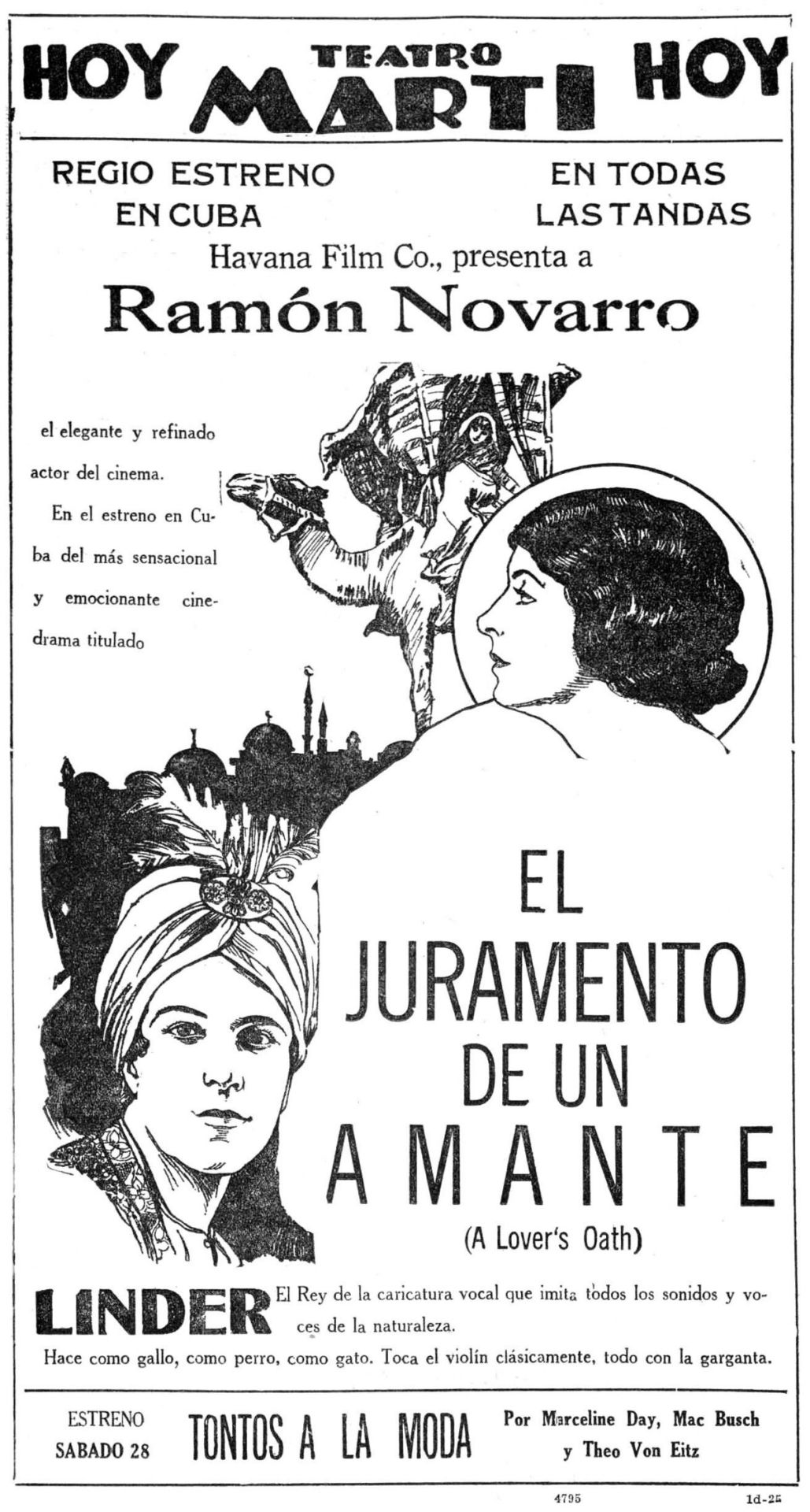
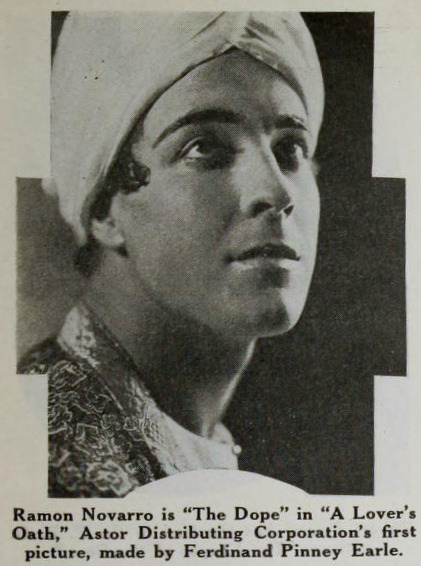
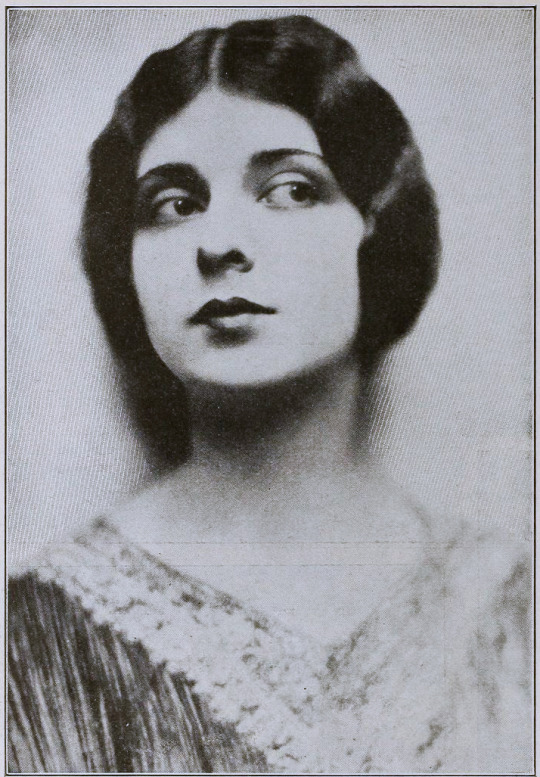
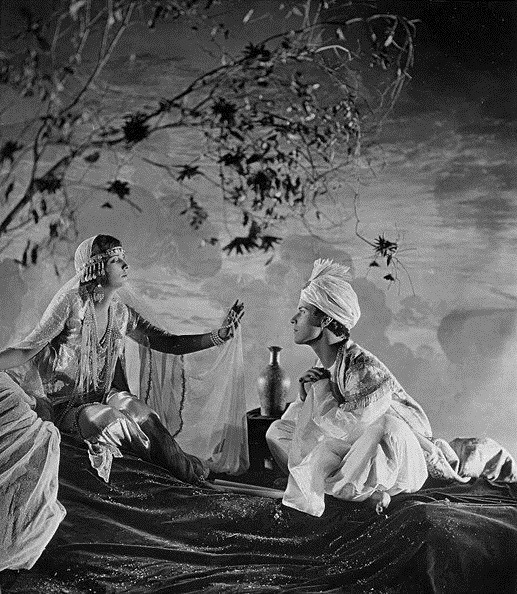
Finally I would like to highlight Ferdinand Earle’s statement to the industry, which he penned for from Camera in 14 January 1922, when his financial backers kidnapped his film to re-edit it on their terms:
MAGNA CHARTA
Until screen authors and producers obtain a charter specifying and guaranteeing their privileges and rights, the great slaughter of unprotected motion picture dramas will go merrily on.
Some of us who are half artists and half fighters and who are ready to expend ninety per cent of our energy in order to win the freedom to devote the remaining ten per cent to creative work on the screen, manage to bring to birth a piteous, half-starved art progeny.
The creative artist today labors without the stimulus of a public eager for his product, labors without the artistic momentum that fires the artist’s imagination and spurs his efforts as in any great art era.
Nowadays the taint of commercialism infects the seven arts, and the art pioneer meets with constant petty worries and handicaps.
Only once in a blue moon, in this matter-of-fact, dollar-wise age can the believer in better pictures hope to participate in a truely [sic] artistic treat.
In the seven years I have devoted to the screen, I have witnessed many splendid photodramas ruined by intruding upstarts and stubborn imbeciles. And I determined not to launch the production of my Opus No. 1 until I had adequately protected myself against all the usual evils of the way, especially as I was to make an entirely new type of picture.
In order that my film verison [sic] of the Rubaiyat of Omar Khayyam might be produced under ideal conditions and safeguarded from intolerable interferences and outside worries, I entered into a contract with the Rubaiyat, Inc., that made me not only president of the corporation and on the board of directors, but which set forth that I was to be author, production manager, director, cutter and film editor as well as art director, and that no charge could be made against the production without my written consent, and that my word was to be final on all matters of production. The late George Loane Tucker helped my attorney word the contract, which read like a splendid document.
Alas, I am now told that only by keeping title to a production until it is declared by yourself to be completed is it safe for a scenario writer, an actor or a director, who is supposedly making his own productions, to contract with a corporation; otherwise he is merely the servant of that corporation, subject at any moment to discharge, with the dubious redress of a suit for damages that can with difficulty be estimated and proven.
Can there be any hope of better pictures as long as contracts and copyrights are no protection against financial brigands and bullies?
We have scarcely emerged from barbarism, for contracts, solemnly drawn up between human beings, in which the purposes are set forth in the King’s plainest English, serve only as hurdles over which justice-mocking financiers and their nimble attorneys travel with impunity, riding rough shod over the author or artist who cannot support a legal army to defend his rights. The phrase is passed about that no contract is invioliable [sic]—and yet we think we have reached a state of civilization!
The suit begun by my attorneys in the federal courts to prevent the present hashed and incomplete version of my story from being released and exhibited, may be of interest to screen writers. For the whole struggle revolves not in the slightest degree around the sanctity of the contract, but centers around the federal copyright of my story which I never transferred in writing otherwise, and which is being brazenly ignored.
Imagine my production without pictorial titles: and imagine “The Rubaiyat” with a spoken title as follows, “That bird is getting to talk too much!”—beside some of the immortal quatrains of Fitzgerald!
One weapon, fortunately, remains for the militant art creator, when all is gone save his dignity and his sense of humor; and that is the rapier blade of ridicule, that can send lumbering to his retreat the most brutal and elephant-hided lord of finance.
How edifying—the tableau of the man of millions playing legal pranks upon men such as Charles Wakefield Cadman, Edward S. Curtis and myself and others who were associated in the bloody venture of picturizing the Rubaiyat! It has been gratifying to find the press of the whole country ready to champion the artist’s cause.
When the artist forges his plowshare into a sword, so to speak, he does not always put up a mean fight.
What publisher would dare to rewrite a sonnet of John Keats or alter one chord of a Chopin ballade?
Creative art of a high order will become possible on the screen only when the rights of established, independent screen producers, such as Rex Ingram and Maurice Tourneur, are no longer interferred with and their work no longer mutilated or changed or added to by vandal hands. And art dramas, conceived and executed by masters of screen craft, cannot be turned out like sausages made by factory hands. A flavor of individuality and distinction of style cannot be preserved in machine-made melodramas—a drama that is passed from hand to hand and concocted by patchworkers and tinkerers.
A thousand times no! For it will always be cousin to the sausage, and be like all other—sausages.
The scenes of a master’s drama may have a subtle pictorial continuity and a power of suggestion quite like a melody that is lost when just one note is changed. And the public is the only test of what is eternally true or false. What right have two or three people to deprive millions of art lovers of enjoying an artist’s creation as it emerged from his workshop?
“The Rubaiyat” was my first picture and produced in spite of continual and infernal interferences. It has taught me several sad lessons, which I have endeavored in the above paragraphs to pass on to some of my fellow sufferers. It is the hope that I am fighting, to a certain extent, their battle that has given me the courage to continue, and that has prompted me to write this article. May such hubbubs eventually teach or inforce a decent regard for the rights of authors and directors and tend to make the existence of screen artisans more secure and soothing to the nerves.
FERDINAND EARLE.
---
☕Appreciate my work? Buy me a coffee! ☕
Transcribed Sources & Annotations over on the WMM Blog!
See the Timeline for Ferdinand P. Earle's Rubaiyat Adaptation
#1920s#1923#1925#omar khayyam#ferdinand pinney earle#ramon novarro#independent film#american film#silent cinema#silent era#silent film#classic cinema#classic movies#classic film#film history#history#Charles Wakefield Cadman#cinematography#The Rubaiyat#cinema#film#lost film
42 notes
·
View notes
Text
There are two people that can scream about hockey for a living, and they are Jesse Pollock and Steve Dangle
3 notes
·
View notes
Text
from the bottom of my heart, i hope jesse pollock is having the worst day🫶
20 notes
·
View notes
Note
I hate how people are acting like hellebuyck dosent deserve the vezina because of this playoff run because 1) the jets d really fucking left him out to die on most of those shots and 2) bitch its a regular season award like damn alot of people hate the jets so much they refuse to see hes the best goalie in the leauge 100% like sorry hes not twink ajadcent enough for you to see hes a amazing goalie
For some reason I think JFresh of all people said it best. The Jets: A balanced offensive team until they weren't, that played elite team defence until it fell apart, and was backstopped by elite goaltending until it wasn't.
I think the Jets were a legit contender whose coach decided to try galaxy-braining in the first round and who got buzzsawed by the well-oiled Avs for it. Those five games were the worst five they've played all season; they're usually Legit.
And yessss Curse Of Small Market because people Don't think about Hellebuyck being elite and they Don't know Kyle Connor is a genuine perennial 40-goalscorer and they Don't Know Nik Ehlers is one of the most analytics-darling analytics darlings in the league and they Don't Know about Josh Morrissey's entire existence frankly, which is devastating to me because I actually really like him. And they don't know Sean Monahan is a Jet either !!! What are we doing to our beautiful aviation men !!! Must mark scheifele and jesse pollock ruin everything
17 notes
·
View notes